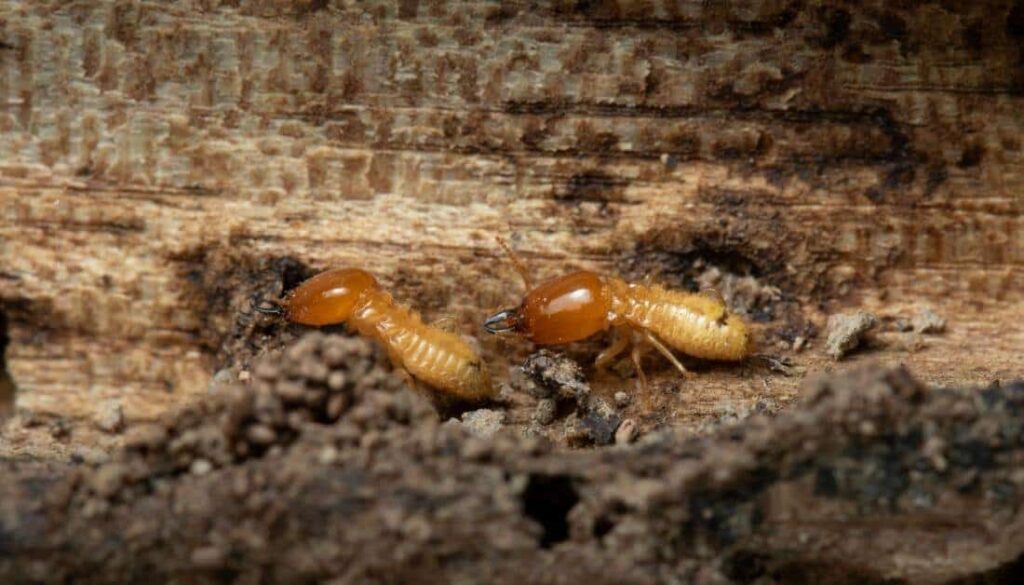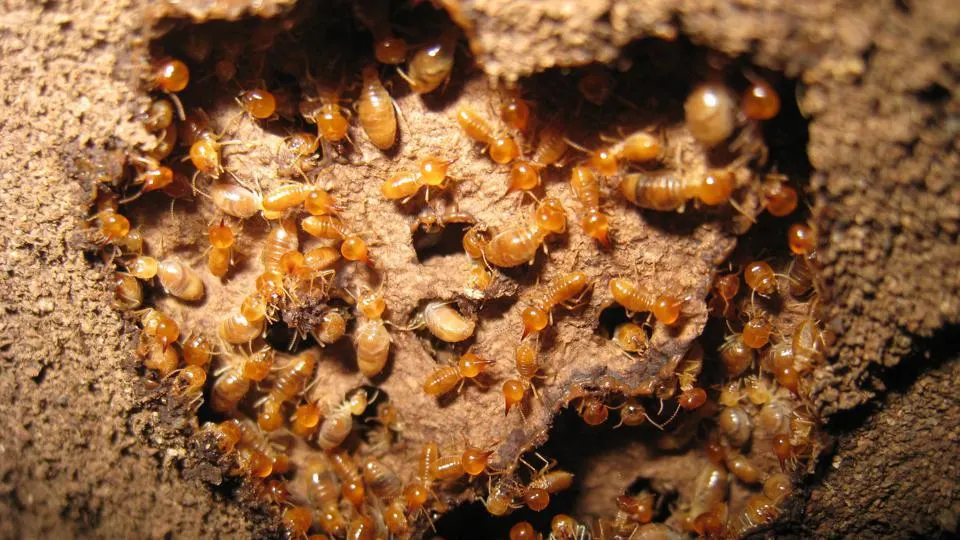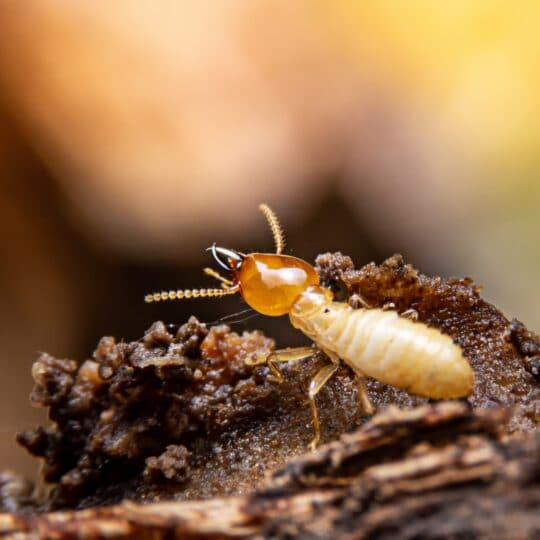Termites, often regarded as destructive insects, have developed various methods to expand their colonies and adapt to diverse environments.
Here are the possible ways to spread termite infestations in your house.
- Termites spread through swarming, where winged reproductive termites fly to establish new colonies.
- They tunnel through wood and soil, creating extensive underground networks.
- Infested wood or soil can carry termites to new locations, aided by human activity.
- Termites can enter structures through cracks or openings in foundations or walls.
- Colonies proliferate, increasing the risk of widespread infestations.
Understanding Termite Colonies and their Activities
When it comes to understanding how termites spread, let’s dive into the intricacies of termite colonies and the primary modes of their expansion.
- Structure and Organization: Termite colonies are like well-structured cities. They consist of three main parts: the underground nest, tunnels, and foraging areas. The nest serves as the colony’s home base, often hidden deep in the soil or wood.
Tunnels connect the nest to foraging areas where termites search for food.
- Roles of Different Castes:
Within a termite colony, there are different castes, each with specific roles:
Workers: Workers are like the labor force. They are responsible for gathering food, building and repairing tunnels, and taking care of the young termites.
Soldiers: Soldiers protect the colony from threats like ants and other predators. They have strong jaws for defense.
Reproductives: The reproductive systems are divided into the king and queen, who are in charge of reproduction, and the alates, which are winged termites that leave the nest during swarming to establish new colonies.
Understanding this organization helps us see how termites work together, allowing them to spread and thrive in different environments.
Modes of Termite Spread

a. Primary Ways Termites Spread to New Locations:
Swarming: Termites use swarming as a way to start new colonies. During swarming, winged termites, known as alates, leave their existing colony to find mates and create new colonies.
This usually happens in the spring when conditions are favorable. The purpose of swarming is to ensure the survival of the termite species by establishing new colonies.
Secondary Reproduction: Within a colony, there are secondary reproductive. If the queen dies or the colony needs to expand quickly, this secondary reproductive can step in and lay eggs. This contributes to colony expansion and ensures its survival.
Natural Spread: Termites can naturally migrate from one location to another through their underground tunnels. They create these tunnels as they forage for food.
Tunneling: Subterranean termites build extensive tunnels and forage for food sources. While foraging, they may inadvertently create tunnels connecting one colony.
This allows for the exchange of workers, soldiers, and reproduction between colonies and can lead to the establishment of new colonies.
Human-induced Spread: Humans can unknowingly facilitate the spread of termites by transporting infested wood, soil, or other materials from one location to another.
Termites can infest wooden structures, lumber, or landscaping materials, and when these infested items are transported to new areas, the termites can establish colonies in the new location.
Gallery Connections: In some cases, termites can establish connections between multiple colonies through underground galleries.
This interconnectivity can enable termites to share resources, such as food and moisture, and may eventually lead to the formation of new colonies.
Over time, these tunnels can extend to new areas, potentially reaching neighboring structures or properties.
Understanding these modes of termite spread helps us grasp how these tiny insects can move from place to place, sometimes causing problems for homeowners and structures.
Human-Induced Spread:
a. How Human Activities and Construction Contribute to Termite Infestations:
Termites are clever hitchhikers, and human actions often help them spread. Here’s how:
- Infested Materials: When construction uses wood or other materials already infested with termites, these tiny insects can be unwittingly introduced to new areas.
- Wood Piles: Leaving untreated wood piles near construction sites can attract termites. Once they infest the woodpile, they may easily move into new structures.
b. Examples of Unintentional Termite Transportation During Construction:
Let’s consider two real-world scenarios:
Example 1: A homeowner orders a load of timber for a DIY project. Unbeknownst to them, the timber contains termite colonies. Using this wood in their project, the termites migrate into their home’s wooden structures.
Example 2: Workers temporarily store untreated wooden beams on-site during a building construction project. These beams become infested with termites. As the building progresses, these termites move from the beams into the newly constructed walls, causing an infestation.
Being aware of how human actions can unintentionally aid termite spread during construction is essential. Careful material selection and construction practices can help prevent these insects from infiltrating homes and structures.
How to Prevent Termite Spread in Your House?
Preventing the spread of termites in your house is crucial for preserving its structural integrity. These destructive pests can silently wreak havoc, so proactive measures are essential.
a. Practical Tips to Prevent Termite Infestations:
To protect your property from termites and halt their spread, consider these strategies:
- Use Termite-Resistant Materials: Opt for building materials that termites find unappetizing, like treated wood or steel. This can deter them from infesting your structure.
- Soil Treatment: Implement soil treatment methods during construction or around your property. These treatments create a barrier that repels termites.
- Wood Maintenance: Keep wooden structures well-maintained, sealing any cracks or openings where termites could enter.
- Remove Dead Wood: Promptly remove dead trees, stumps, and wooden debris from your property. These can attract termites.
b. The Importance of Regular Inspections and Early Detection:
Regular inspections by pest control professionals are your best defense against termite infestations. Early detection is key because:
- Minimizes Damage: Identifying termites early allows for prompt treatment, minimizing potential structural damage.
- Cost-Effective: Treating a small termite infestation is much less expensive than dealing with extensive damage.
- Preserve Property Value: Protecting your property from termites through regular inspections helps maintain its value and saves you from costly repairs.
Case Studies: Sharing 2 Real-World Examples of Termite’s Spread

Case Study 1: Hidden Invasion
Imagine you’re a homeowner in a suburban area. One day, you notice small, mud-like tubes along the exterior walls of your house. Unbeknownst to you, these are termite mud tunnels.
Over time, the termites have silently invaded your home, feasting on wooden beams and support structures.
Consequence: Without early detection, these termites can cause extensive damage, weakening the structural integrity of your home.
Repairing the destruction may require significant time and financial resources, making termite prevention and regular inspections crucial.
Case Study 2: Construction Conundrum
Suppose you’re a property developer working on a new housing project. You use untreated wood from a supplier that unknowingly had a termite infestation. During construction, termites from the wood infest the newly built houses.
Consequence: Homeowners move in, only to discover termite damage in their brand-new homes. This situation leads to costly repairs and damages your reputation as a builder.
Finally, These real-world examples illustrate the severe termite consequences of infestations for both homeowners and structures.
They underscore the significance of proactive prevention measures, such as regular inspections, using termite-resistant materials, and ensuring the quality of construction materials to protect homes from these silent invaders.
FAQs
How do termites spread to new locations?
Termites mainly spread by flying out of their colony to find mates and start new colonies in different places.
Can termites be carried into homes by people or pets?
Yes, people or pets can carry termites into homes on infested wood, soil, or other materials.
Do termites travel through the soil to infest new areas?
Yes, termites travel through the soil to infest new areas by creating underground tunnels and foraging for wood and cellulose materials to feed on.
Can termites spread through adjacent buildings or structures?
Yes, termites can spread through adjacent buildings or structures if they have interconnected pathways, such as shared walls or foundations, allowing them to move from one location to another.
Do termites spread seasonally, or is it a year-round concern?
Termite swarming typically occurs in the spring, but they can infest homes and structures year-round, depending on the species and local climate.
Can termites spread through wooden fences or decks?
Yes, termites can spread through wooden fences or decks, as they often infest and travel through these structures in search of wood to feed on.
Are there any precautions to prevent termites from spreading during construction projects?
Yes, taking precautions like treating the soil, using termite-resistant materials, and regular inspections can help prevent termites from spreading during construction projects.
Can termites spread from tree stumps or dead wood near a property?
Yes, termites can spread from tree stumps or dead wood near a property, as they often forage in these areas and may subsequently infest nearby structures.
Do termites spread through wooden mulch in gardens?
Yes, termites can spread through wooden mulch in gardens if it is infested with termites or provide a bridge for them to access nearby structures.
Can termites spread from neighboring properties to the mine?
Yes, termites can spread from neighboring properties to yours if there is no effective barrier or preventive measures in place to block their entry.
Conclusion
In conclusion, you’ve learned that termites can spread through various means, including swarming, tunneling, and being transported through infested wood or soil.
To protect your home from these destructive pests, it’s vital to maintain regular inspections, address moisture issues, and implement preventive measures like termite barriers.
Staying alert and taking proactive measures can greatly decrease the chances of termite infestations and keep your property safe from potential harm.

